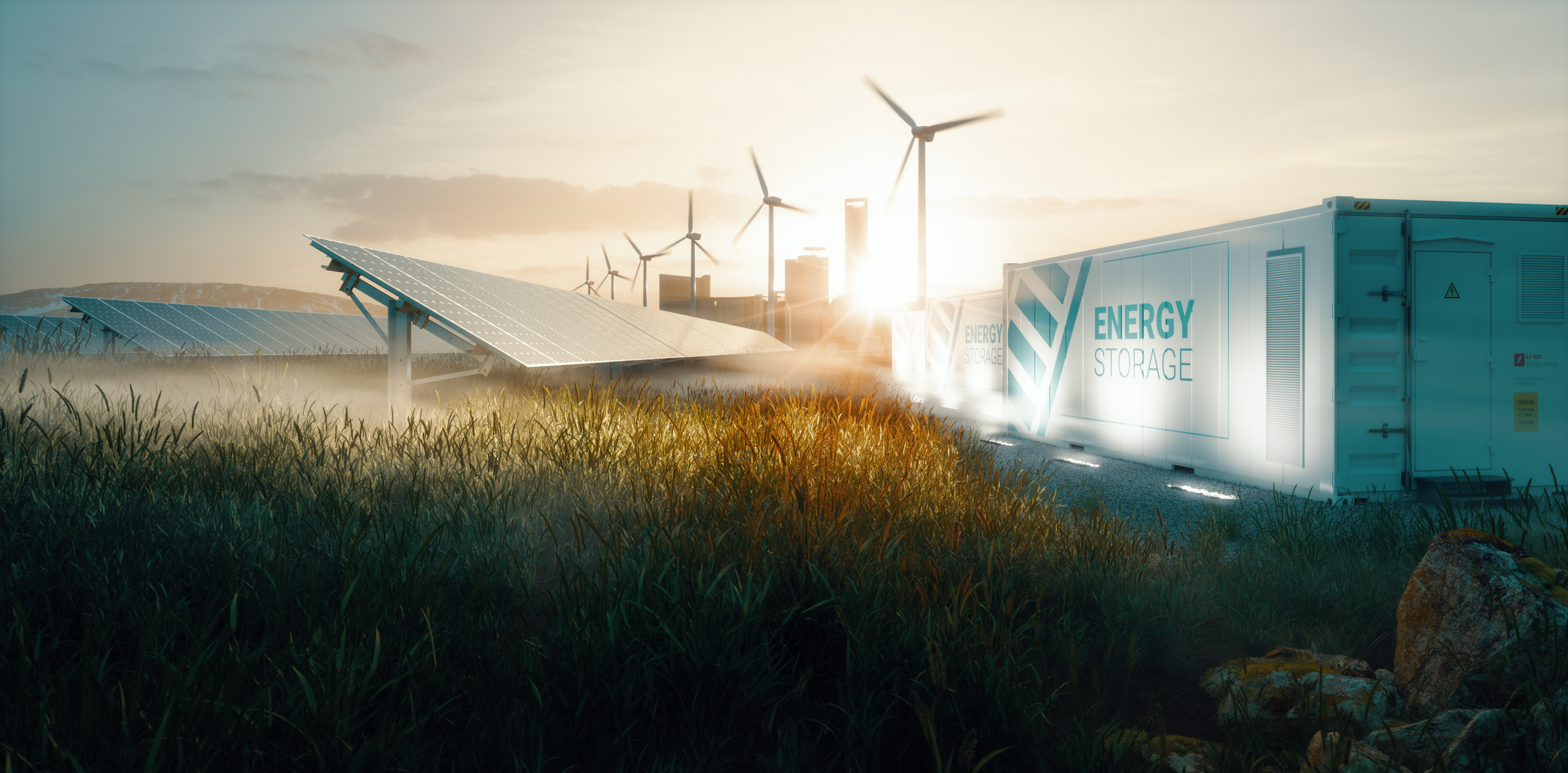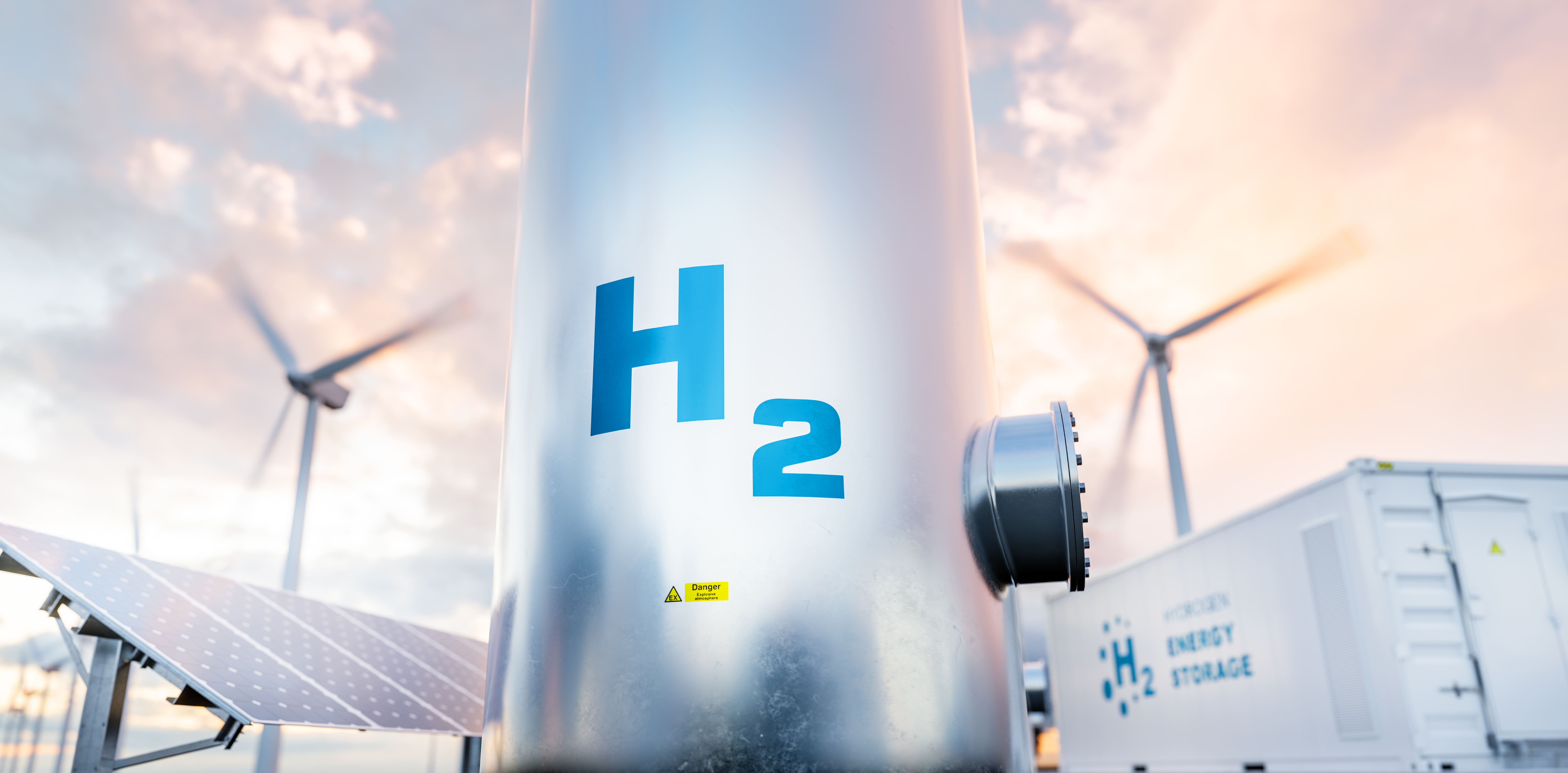How much green hydrogen will Europe’s industry need in 2050?
The transition to a climate-neutral industry in Europe is essential to combat the climate crisis. At the center of this industrial transformation is the production of steel, cement and chemicals. A new study by Fraunhofer ISI for the EU Commission has examined the impacts of the industry transition on the European energy system in different scenarios. The study shows that Europe’s industry in 2050 will need substantial amounts of green hydrogen and a corresponding transport infrastructure, even with strong electrification of process heat. In the interview, the study’s author, Dr. Tobias Fleiter, explains the results and reveals where the green hydrogen for our industry could come from in the future.

What could Europe’s energy system look like in 2050?
Tobias Fleiter: The good news is that our analysis shows that a greenhouse gas reduction of at least 95 percent is possible for European industry by 2050. But a lot has to happen for this transformation to succeed. For example, we need to implement the circular economy, and achieve higher energy and material efficiencies as well as the rapid introduction and dissemination of climate-neutral production processes in many sectors, in some cases even before 2030.
The European energy system in 2050 will be characterized by a much higher demand for electricity and hydrogen. In industry alone, the demand for electricity could rise from just over 1,000 TWh in 2019 to between 1,500 and 1,850 TWh in 2050, depending on the scenario. The demand for hydrogen could be between 1,350 and 1,800 TWh in 2050, depending on the degree of electrification. The demand for hydrogen could be significantly lower if the basic chemicals and steel industries relocate individual energy-intensive production steps outside of Europe. However, total energy demand, which today also includes many fossil energy sources, will be lower in 2050 than it is at present because of increasing energy efficiency.
We use the energy system model METIS in the study to examine a CO2-neutral European energy system. Our focus is on the role of CO2-neutral industrial production and its impacts on the hydrogen and electricity system. The modeling is based on a cost optimization of the system. The future demand for electricity and hydrogen is given exogenously and the model then calculates the system with minimal overall costs including the expansion and use of renewable energies, transport capacities between countries and storage systems.
What influence will the transformation of industry have on the energy system?
Tobias Fleiter: CO2-neutral industrial production will require large amounts of CO2-neutral hydrogen and electricity, especially to provide process heat and replace the natural gas used today, but also to supply the chemicals industry. A few intermediate products of the chemical industry (and steel production) are responsible for a large proportion of the hydrogen needed. At the same time, it is very uncertain how the chemical industry will set up CO2-neutral value chains globally in the future. This is why we calculated a scenario variant in which we assume that intermediate products like ammonia, methanol and ethylene as well as sponge iron are imported to Europe. This would result in the demand for hydrogen being lower by about 900 TWh.

Which countries could produce green hydrogen for Europe’s industry at the lowest cost?
Tobias Fleiter: The results paint a relatively clear picture: The key prerequisites for the CO2-neutral system are large amounts of photovoltaic and wind power deployed at the best locations in Europe. Our model sees the biggest capacities for producing green hydrogen in France, Spain, the United Kingdom and Norway. If the hydrogen scenario occurs, Finland could also become one of the major hydrogen exporters to meet the demand in Europe. If renewable energies are not located cost-optimally in European countries, it would be economical to import hydrogen from North Africa or the MENA region to meet Europe’s demand. Green hydrogen is produced using electrolysis, mainly in regions that have high RE potential and low energy demand. The hydrogen is then transported to the demand centers via a pipeline network. These demand centers include Germany and the Netherlands, for example, which have high population density and a basic chemicals industry.
According to the study, under this cost-optimal perspective, there would be no significant production of green hydrogen in Germany, because other countries have better production conditions. Should Germany give up on producing its own green hydrogen?
Tobias Fleiter: When interpreting the study, it is important to remember that the scenarios are based on a purely techno-economically optimized development of the CO2-neutral energy system in Europe, in other words, without considering any political and societal restrictions to its implementation. In this respect, this study is in no way a prediction and cannot be a direct template for policymaking. But it can be used as input to develop strategies. And the key message for the EU and its member states is that integrating the European system (through the trading of electricity and hydrogen) has cost advantages over national solutions.
It should not come as a surprise to anyone that it is more cost-efficient to produce green hydrogen at locations with high potential for wind and solar energy. Nevertheless, policymakers have to weigh up how much Germany, for example, wants to and should be dependent on other (European) countries. If, in addition, there are expectations that the expansion of renewables in many countries will not proceed as quickly as calculated, Germany should of course still try to produce its own green hydrogen. Systemic resilience is therefore the key buzzword here and should not be neglected. In the end, the good news is that, in theory, Europe fulfills the prerequisites to supply itself cost-efficiently with green hydrogen independently of third countries.
More information
Last modified: